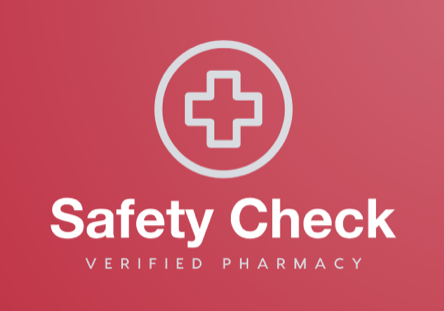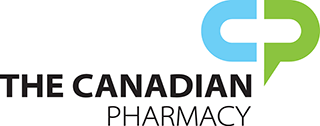
Need help? Start a web chat with one of our pharmacists or our customer service representatives now!
HOURS OF OPERATION:
Monday to Thursday
8 AM to 5 PM (CST)
Friday
8 AM to 4 PM (CST)
Need help? Start a web chat with one of our pharmacists or our customer service representatives now!
HOURS OF OPERATION:
Monday to Thursday
8 AM to 5 PM (CST)
Friday
8 AM to 4 PM (CST)
Download The Canadian Pharmacy's
FREE guide:
"Safely Buying Prescription Drugs Online: The Comprehensive Guide"
Tell your friend about us and earn $25 for each new customer you refer to us.
Learn MoreMillions of Americans rely on Medicare Part D to help them pay for important medications. But recently, changes to Medicare Part D were proposed that left many concerned for patients’ best interests.
Medicare Part D is an optional prescription drug program that went into effect in 2006. The plan helps many pay for their drugs, but the program hasn’t been free from criticism. Critics are concerned about the fact that although the government is paying for the plan, they don’t have the ability to negotiate for lower prices in the same way that they do in other programs.
Another major concern critics often discuss is the so-called “doughnut hole” of Medicare Part D programs. Each program covers medications until the patient reaches a threshold of $2,930. At that time, the patient is required to pay the full costs of their medications until they’ve spent a total of $4,700 out of pocket. Once this requirement is met, coverage kicks back in. Unfortunately, many people on Medicare are retired senior citizens who live on tight incomes, making this sudden leap in prescription expenses feel quite daunting.
Medicare Part D isn’t just a single plan; the coverage is actually provided by numerous prescription drug insurance companies. While guidelines set by the government must be followed, each plan still has a great deal of freedom to set their own formulary (list of medications covered under the plan), tiers of coverage, monthly premiums, and so forth. When choosing a Medicare Part D plan, it’s important to carefully consider your needs and shop around to find the plan that will best meet them.
Originally, three classes of medication were identified for removal from Medicare Part D coverage – immunosuppressants, antispychotics, and antidepressants.
This announcement raised many eyebrows. Immunosuppressants, often used to treat autoimmune conditions, tend to be expensive, and switching the burden of the cost of the drugs onto the patient would pose a significant challenge for the patients who require them.
Also concerning is the desire to remove coverage of antipsychotics and antidepressants. The removal of these medications primarily affects a highly vulnerable population (and could even be seen as reinforcing the stigma that is already attached to mental illness).
Another change that was suggested was to limit the number of plans that each insurer can offer in a region to one basic plan and one enhanced plan. Concerns about this change are primarily around limitation of choice and a resulting cost increase.
As soon as these changes were proposed, patient advocates, drug companies, Democrats, and Republicans voiced opposition. Representative Tim Murphy (R-PA), who also happens to practice psychology, was particularly concerned about the elimination of necessary psychiatric medications. He pointed out that restricting access to medications such as these was equivalent to restricting access to mental health care and even predicted that suicides would increase if these changes were enacted.
While some senior groups welcomed the proposed changes that would limit coverage options with the idea that fewer options would make choosing a plan simpler, other advocates were angered at the notion of limiting consumer choices.
The wide outcry from all sides – particularly from both sides of the political aisle – resulted in the proposed changes being shut down. The Administrator of the Centers for Medicare and Medicaid Services, Marilyn Tavenner, noted that in the future, more input from those affected would be sought before making changes.
Unfortunately, drug prices remain high, and the Medicare Part D doughnut hole continues to be a concern for patients. Online pharmacies like The Canadian Pharmacy can help patients who are struggling to pay for their prescriptions.

The Canadian Pharmacy is licensed by the College of Pharmacists of Manitoba (IPS License #32588)
*Required by law in all Manitoba Pharmacies.
© 2005 - 2013 The Canadian Pharmacy | Powered by Pharmacywire
Be advised that, given the international nature of the practice of International Prescription Service (IPS) pharmacy, there may be limitations in the ability of the College of Pharmacists of Manitoba, which is the statutory licensing authority for pharmacies and pharmacists in the Province of Manitoba, to investigate and prosecute complaints from persons who receive services or products from an IPS pharmacy. Manitoba pharmacies are not permitted to fill US physicians' prescriptions. They can only fill prescriptions issued by a physician licensed in a province or territory of Canada. CPhM takes the position that it may be contrary to professional standards for a pharmacist to fill prescriptions by a physician, licensed in a province or territory of Canada, who has not established an acceptable patient physician relationship with you.
103-1780 Wellington Avenue Winnipeg, MB CANADA
R3H 1B3
Toll Free Phone: 1.866.335.8064
Toll Free Fax: 1-866-795-5627
International Phone: 1.204.697.5910
International Fax: 1.204.697.5915


0 comment